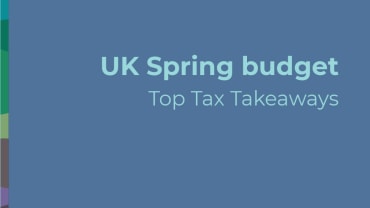Here are our top tax takeaways from the UK Autumn Statement delivered today by Chancellor, Jeremy Hunt.
1. The additional rate threshold (ART) above which taxpayers pay the top rate of tax (45%) is currently £150,000. From 5 April 2023, this will drop to £125,140, meaning taxpayers will pay an additional £1,243. Scotland’s top rate (46%) threshold remains at £150,000 but it must be expected that this will be reduced in the Scottish budget on 15 December. Meanwhile the dividend allowance, currently £2,000, will drop to £1000 from 6 April 2023 and to £500 from 6 April 2024.
2. Income tax allowances and thresholds were due to remain frozen until 5 April 2026. With the exception of the additional rate threshold and the dividend allowance, the other allowances and thresholds are now set to remain frozen until 5 April 2028. National Insurance thresholds will also remain frozen until 2028. These announcements will bring more people into higher rates and raise large sums for the Government.
3. Despite rumours of an increase in the capital gains tax rate, the main change was that the CGT annual allowance is to be reduced from £12,300 to £6,000 from April 2023; and halved from that figure to £3,000 from April 2024. As well as raising significant sums, these reductions will increase the compliance burden for individuals considerably, as a CGT liability demands a return even from the majority of taxpayers who do not have to complete one every year.
4. The inheritance tax threshold is to remain frozen at £325,000 until April 2028. This is now a deep-freeze, as the threshold has been at this level since April 2009. The residential nil-rate band is also frozen at £175,000. This means that a well-organised couple can still pass on a maximum of £1 million to their descendants without incurring IHT.
5. The Energy Profits Levy will be extended to end March 2028 and increased to 35% from 1 January 2023. A new and temporary 45% Electricity Generator Levy will apply to certain low-carbon electricity generators in relation to extraordinary returns exceeding £10m and arising from 1 January 2023.
6. The SDLT cuts introduced from 23 September 2022 increasing the residential nil rate band from £125,000 to £250,000 and first time buyers relief to £425,000 will come to an end on 31 March 2025. Land transaction taxes are devolved to Scotland and Wales, and it is now less likely that any similar reduction in residential LBTT will be introduced in Scotland, given that the SDLT reductions are time limited. It will be for the Welsh Government to decide whether to time limit the changes to LTT which were announced on 27 September 2022.
7. Research & Development Expenditure Credit will increase from 13% to 20% for expenditure on or after 1 April 2023, with the SME additional deduction reducing from 130% to 86% and the SME credit rate decreasing from 14.5% to 10%. The Government is consulting further on additional reforms.
8. Employment Allowance is to be retained at its newer higher level of £5,000 per annum until April 2026 and the Employers NICs threshold, at which employers start to pay Class 1 Secondary NICs for their employees, is frozen at £9,100 until April 2028.
9. VAT registration and deregistration thresholds for businesses will remain fixed until 1 April 2026 (£85,000 and £83,000 respectively).
10. A business rates revaluation will take place in England on April 2023 but a range of measures will soften the impact of an increase in rateable values. The multiplier will not be increased, reducing bills by 6%. A transitional relief scheme will cap increases due to the 2023 revaluation, with particular relief for small businesses and the relief for retail, hospitality and leisure businesses is to be extended and increased from 50% to 75% from 2023-24. Different rules apply in Scotland, Wales and Northern Ireland.
Contributors
Partner
Director of Corporate Tax
Partner
Partner
Partner
Director of Personal Tax
Senior Solicitor
Senior Solicitor


















